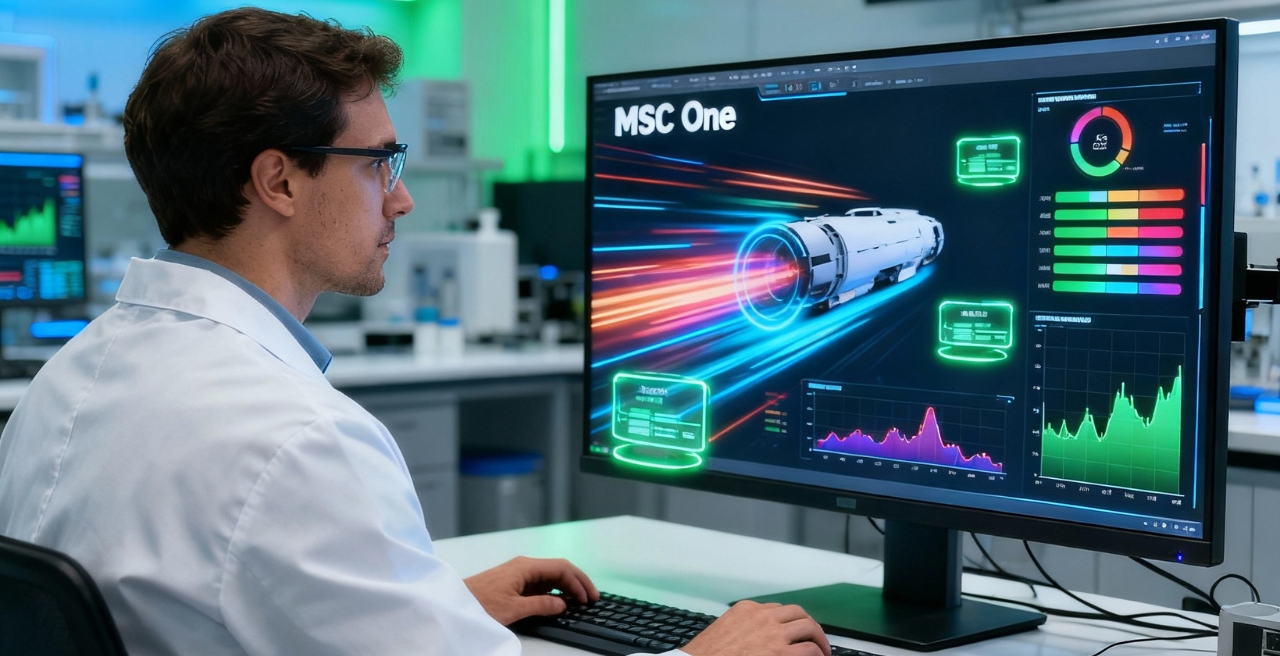In the current rapid engineering environment, simulation software is essential for minimizing product development duration and enhancing design precision.
Engineers are required to produce results more quickly, without compromising on accuracy or performance. This is where MSC One, Hexagon’s integrated simulation platform, provides a significant benefit.
Regardless of whether you are utilizing MSC Nastran, Adams, Marc, or SimManager, improving your workflow can significantly boost productivity.
Below are the key strategies and techniques to accelerate simulation processes in MSC One / Hexagon, enabling you to achieve quicker and more effective results.
1. Leverage the Power of MSC One Tokens
One of the most adaptable aspects of MSC One CAD and simulation software is its token-based licensing system. Rather than acquiring individual licenses for each solver, tokens enable users to dynamically access various applications.
Tips:
- Organize simulation tasks to maximize the utilization of available tokens.
- Conduct simulations during off-peak hours to prevent license congestion.
- Track usage patterns via the MSC License Manager to enhance allocation.
Effective token management ensures that you are achieving the highest return on your simulation investment.
2. Automate Repetitive Simulation Tasks
The manual configuration and meshing processes require significant time investment. By implementing automation via scripting and templates, one can decrease repetitive tasks and ensure consistency.
Try This:
- Utilize Python or MATLAB scripts to automate pre-processing or post-processing tasks.
- Store simulation templates in SimManager for future use across various projects.
- Execute batch processing of extensive simulation sets overnight to enhance productivity.
The incorporation of automation within MSC One workflows not only accelerates the process but also reduces the likelihood of human error.
3. Use High-Performance Computing (HPC) Effectively
The effectiveness of your simulation performance is significantly influenced by the available computing resources. Hexagon’s MSC software facilitates multi-core and GPU acceleration, which can substantially decrease analysis time.
Tips:
- Activate parallel processing in MSC Nastran or Marc.
- Utilize GPU acceleration for simulations that require extensive computation.
- Refine your mesh-detailed where necessary, and coarse where feasible.
- Test various solver options to find the right balance between speed and accuracy.
Integrating high-performance computing is among the most effective methods to enhance simulation speed in intricate projects.
4. Simplify and Reuse Simulation Models
Excessively intricate models may hinder analysis efficiency. By simplifying geometry while maintaining accuracy, one can attain quicker outcomes.
Tricks:
- Eliminate superfluous CAD elements such as minor holes or fillets.
- Employ submodeling methods to concentrate on essential areas.
- Develop a repository of verified simulation models for future use.
Optimizing models enhances solver efficiency and conserves time during iterative design processes.
5. Centralize Data with MSC SimManager
Overseeing numerous models, outcomes, and revisions can rapidly lead to disorder. MSC SimManager, which is included in the MSC One suite, facilitates the efficient organization and tracking of simulation data.
Benefits:
- Consolidate all files within a single centralized database.
- Label and classify projects for swift access.
- Automate reporting to reduce post-processing time.
Data management via SimManager improves collaboration and guarantees version control among teams.
6. Optimize Solver Settings for Better Speed
Refining solver configurations in MSC Nastran or Marc can significantly enhance speed while maintaining accuracy.
Tips:
- Employ adaptive meshing to focus on refining critical areas.
- Modify convergence criteria to prevent superfluous computations.
- Use restart files to continue interrupted processes rather than starting anew.
- Leverage solver-specific functionalities such as Nastran SOL 400 for nonlinear analysis.
Intelligent solver optimization frequently results in quicker simulations compared to hardware enhancements alone.
7. Collaborate Through Hexagon’s Connected Ecosystem
MSC One / Hexagon integrates a diverse array of simulation tools-ranging from structural to thermal and motion analysis-into a single platform. This facilitates enhanced collaboration among various departments.
Tips:
- Facilitate the sharing of results across tools such as Adams, Actran, and Simufact effortlessly.
- Promote collaboration among multi-disciplinary design teams through the use of digital twins.
- Utilize Hexagon Nexus for the management of real-time data sharing and cloud-based simulations.
This interconnected strategy fosters innovation while ensuring the integrity of data remains consistent.
8. Keep Software and Hardware Up to Date
Obsolete solvers or sluggish hardware can impede even the most refined workflows.
Tips:
- Consistently update to the most recent MSC One / Hexagon versions to improve solver efficiency.
- Consider investing in SSDs and guarantee adequate RAM for extensive simulations.
- Investigate cloud-based HPC for scalable solutions on demand.
Maintaining an updated simulation environment allows you to fully leverage Hexagon’s newest advancements.
Conclusion
Accelerating simulation workflows in MSC One / Hexagon involves working more intelligently rather than exerting more effort.
By utilizing token flexibility, automation, high-performance computing resources, effective data management, and refined solver configurations, engineers can attain quicker and more precise simulation outcomes.
Applying these actionable recommendations guarantees that your MSC One simulation process stays efficient, collaborative, and prepared for the future-enabling you to produce superior designs in a shorter timeframe.
















